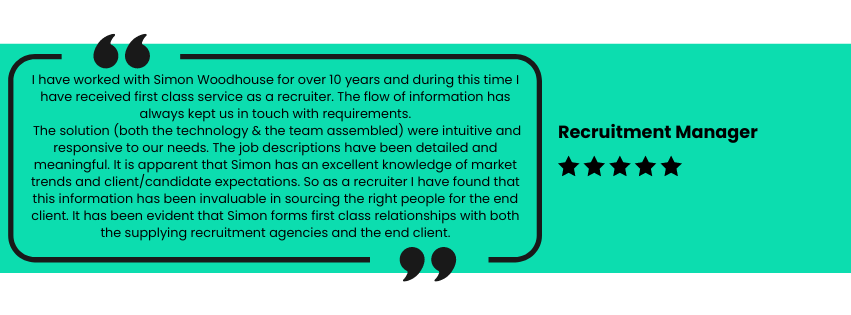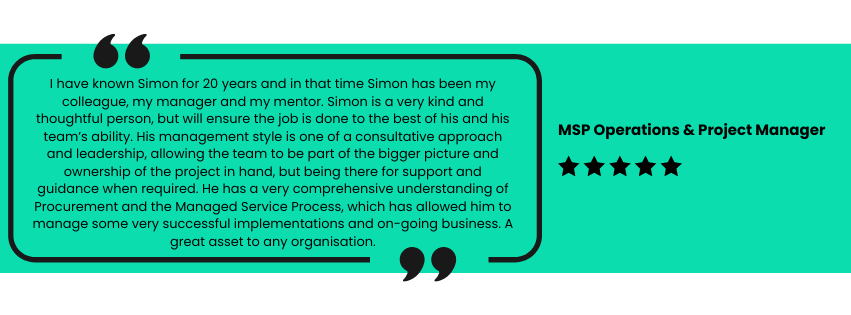The Keys to Successful & Effective Change Management
Article 1 - Change Management Series
Click here to read other articles on change management.
By Simon Woodhouse, Director
Are you planning to make a change to your organisation, its structure, its processes, and/or its technology? We all work in ever changing sectors and markets and so we know that change is inevitable to ensure consistent improvement. The purpose of this article is to help you to understand the keys to success and the barriers you could encounter to achieve effective change.
1. Ensure strong leadership at all levels
Business leadership is one of the keys to the success or failure of any program of change.
Senior board members or management (aka the C-Suite*) need to be strong and supporting, with this leadership and focus filtering through to all levels of the organisation.
Unsurprisingly the lowest performing change programs (the bottom 25 percent**) are led by strong leadership teams at the C-Suite, but the messages and process changes fail to be effectively implemented at a lower level. The top quartile of highest performing change programs all have strong and constant capabilities in leading the program down throughout the levels with their organisation.
2. Accept your imperfections
From the outset, it is very important to remember that there are no perfect companies, and consequently you should recognise that there are areas of dysfunction within your organisation. These areas should be identified and addressed during the planning stages so that they do not cause disruption when the project cycle is rolled out. A lack of honesty during the planning stage will only handicap the success of the final outcome.
A strong senior leadership team should not be afraid to identify any weakness. It should also ensure that all levels of management are capable, that identified gaps are bridged by training, and thereby, ensure that all the team members are equipped to handle change.
Together these management teams should help remove road-blocks to change, and by doing so, ensure that frustrations are removed. The key here is to keep the passion and drive at the optimum level throughout the cycle to guarantee the success of the program.
3. Communicate with your workforce
The emotional impact of change is often viewed by senior management as just the employees/workforce being fussy. This is not the case, as these emotions, which include fear, frustration, passion and drive, are all real, and have a huge impact on the change program. These emotions are central influencers on the success or failure of a program of change.
For example, as fear and frustration grip the workforce, the realisation of the forecasted benefits can reduce by between 25 and 30%. It is therefore vital that the C-suite and change management team have a strategy to address this. This can be as simple as not just explaining what is going to happen, but also why. Consultation with the workforce during the planning stages can help your workforce get more buy-in, and may help to highlight barriers you did not originally see. You may get a focus group of employees rather than your whole workforce. There are lots of ways that you can ensure that you minimise the emotional impact.
By getting your workforce engaged and enthusiastic about change, benefits can increase by up to 50%**. If you develop a plan to address the obvious fears and frustrations that will be generated during a period of change, and you support and encourage the change management team throughout the cycle of change, then the resultant benefits are up to 100% greater than if you do not.
What to expect
With many change programs there is an initial dip in output prior to a Go-Live event, and thereafter a gradual improvement as the change impacts the organisation. However, it has been seen that in the top 10%** of performing organisations, no such dip is evident, and even more impressively the impact of the change event is an immediate realisation of the forecasted benefits.
What do top performing organisations do?
Top performing organisations will honestly identify their strengths & weaknesses, and develop a plan to address these in a positive way, by training, support structures and hiring additional resource to strengthen the team.
They will also ensure that there is a strong emotional commitment to the vision of change. Initially the final destination is not important, but more so the inherent trust and hope in the leadership within the team. Collectively you will go on a journey towards the ultimate destination once the fully shared vision is crystallised in the minds and hearts of those in the change management team.
*Misc Info:
C-suite is a widely-used slang term used to collectively refer to a corporation's most important senior executives. C-Suite gets its name because top senior executives' titles tend to start with the letter C, for chief, as in chief executive officer, chief operating officer and chief information officer.
** Big Change Best Path by Warren Parry
Download this article on the Keys to Successful Change Management as a PDF by clicking here








